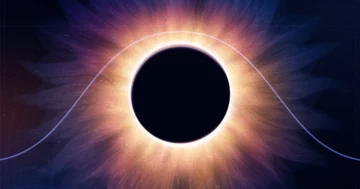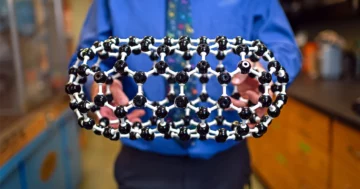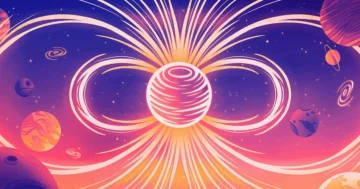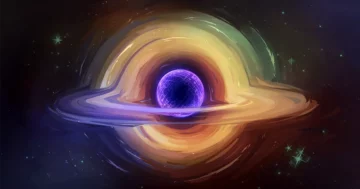
Virgo-originating cosmic rays bend around in the galaxy’s twisting field lines so that they strike us from the direction of Canis Major, where Auger sees the center of its excess. The researchers analyzed how the resulting pattern would change for cosmic rays of different energies. They consistently found a close match with different subsets of Auger’s data.
The researchers’ “continuous model” of the origins of ultrahigh-energy cosmic rays is a simplification — every piece of matter does not emit ultrahigh-energy cosmic rays. But its striking success reveals that the actual sources of the rays are abundant and spread evenly throughout all matter, tracing the large-scale structure. The study, which will appear in The Astrophysical Journal Letters, has garnered widespread praise. “This is really a fantastic step,” Watson said.
Immediately, certain stocks have risen: in particular, three types of candidate objects that thread the needle of being relatively common in the cosmos yet potentially special enough to yield Oh-My-God particles.
Icarus Stars
In 2008, Farrar and a co-author proposed that cataclysms called tidal disruption events (TDEs) might be the source of ultrahigh-energy cosmic rays.
A TDE occurs when a star pulls an Icarus and gets too close to a supermassive black hole. The star’s front feels so much more gravity than its back that the star gets ripped to smithereens and swirls into the abyss. The swirling lasts about a year. While it lasts, two jets of material — the subatomic shreds of the disrupted star — shoot out from the black hole in opposite directions. Shock waves and magnetic fields in these beams might then conspire to accelerate nuclei to ultrahigh energies before slingshotting them into space.
Tidal disruption events occur roughly once every 100,000 years in every galaxy, which is the cosmological equivalent of happening everywhere all the time. Since galaxies trace the matter distribution, TDEs could explain the success of Ding, Globus and Farrar’s continuous model.
Moreover, the relatively brief flash of a TDE solves other puzzles. By the time a TDE’s cosmic ray reaches us, the TDE will have been dark for thousands of years. Other cosmic rays from the same TDE might take separate bent paths; some might not arrive for centuries. The transient nature of a TDE could explain why there seems to be so little pattern to cosmic rays’ arrival directions, with no strong correlations with the positions of known objects. “I’m inclined now to believe they are transients, mostly,” Farrar said of the rays’ origins.
The TDE hypothesis got another boost recently, from an observation reported in Nature Astronomy in February.
Robert Stein, one of the paper’s authors, was operating a telescope in California called the Zwicky Transient Factory in October 2019 when an alert came in from the IceCube neutrino observatory in Antarctica. IceCube had spotted a particularly energetic neutrino. High-energy neutrinos are produced when even-higher-energy cosmic rays scatter off light or matter in the environment where they’re created. Luckily, the neutrinos, being neutral, travel to us in straight lines, so they point directly back to the source of their parent cosmic ray.
Stein swiveled the telescope in the arrival direction of IceCube’s neutrino. “We immediately saw there was a tidal disruption event from the position that the neutrino had arrived from,” he said.
The correspondence makes it more likely that TDEs are at least one source of ultrahigh-energy cosmic rays. However, the neutrino’s energy was probably too low to prove that TDEs produce the very highest-energy rays. Some researchers strongly question whether these transients can accelerate nuclei to the extreme end of the observed energy spectrum; theorists are still exploring how the events might accelerate particles in the first place.
Meanwhile, other facts have turned some researchers’ attention elsewhere.
Starburst Superwinds
Cosmic-ray observatories such as Auger and the Telescope Array have also found a few hot spots — small, subtle concentrations in the arrival directions of the very highest-energy cosmic rays. In 2018, Auger published the results of a comparison of its hot spots to the locations of astrophysical objects within a few hundred million light-years of here. (Cosmic rays from farther away would lose too much energy in mid-journey collisions.)
In the cross-correlation contest, no type of object performed exceptionally well — understandably, given the deflection cosmic rays experience. But the strongest correlation surprised many experts: About 10% of the rays came from within 13 degrees of the directions of so-called “starburst galaxies.” “They were not on my plate originally,” said Michael Unger of the Karlsruhe Institute of Technology, a member of the Auger team.
No one was more thrilled than Luis Anchordoqui, an astrophysicist at Lehman College of the City University of New York, who proposed starburst galaxies as the origin of ultrahigh-energy cosmic rays in 1999. “I can be kind of biased on these things because I was the one proposing the model that now the data is pointing to,” he said.
Starburst galaxies constantly manufacture a lot of huge stars. The massive stars live fast and die young in supernova explosions, and Anchordoqui argues that the “superwind” formed by the collective shock waves of all the supernovas is what accelerates cosmic rays to the mind-boggling speeds that we detect.
Not everyone is sure that this mechanism would work. “The question is: How fast are those shocks?” said Frank Rieger, an astrophysicist at Heidelberg University. “Should I expect those to go to the highest energies? At the moment I am doubtful about it.”
Other researchers argue that objects inside starburst galaxies might be acting as cosmic-ray accelerators, and that the cross-correlation study is simply picking up on an abundance of these other objects. “As a person who thinks of transient events as a natural source, those are very enriched in starburst galaxies, so I have no trouble,” said Farrar.
Active Galaxies
In the cross-correlation study, another kind of object performed almost but not quite as well as starburst galaxies: objects called active galactic nuclei, or AGNs.
AGNs are the white-hot centers of “active” galaxies, in which plasma engulfs the central supermassive black hole. The black hole sucks the plasma in while shooting out enormous, long-lasting jets.
The high-power members of an especially bright subset called “radio-loud” AGNs are the most luminous persistent objects in the universe, so they’ve long been leading candidates for the source of ultrahigh-energy cosmic rays.
However, these powerful radio-loud AGNs are too rare in the cosmos to pass the Ding, Globus and Farrar test: They couldn’t possibly be tracers for the large-scale structure. In fact, within our cosmic neighborhood, there are almost none. “They’re nice sources but not in our backyard,” Rieger said.
Less powerful radio-loud AGNs are much more common and could potentially resemble the continuous model. Centaurus A, for instance, the nearest radio-loud AGN, sits right at the Auger Observatory’s most prominent hot spot. (So does a starburst galaxy.)
For a long time Rieger and other specialists seriously struggled to get low-power AGNs to accelerate protons to Oh-My-God-particle levels. But a recent finding has brought them “back in the game,” he said.
Astrophysicists have long known that about 90% of all cosmic rays are protons (that is, hydrogen nuclei); another 9% are helium nuclei. The rays can be heavier nuclei such as oxygen or even iron, but experts long assumed that these would get ripped apart by the violent processes needed to accelerate ultrahigh-energy cosmic rays.
Then, in surprising findings in the early 2010s, Auger Observatory scientists inferred from the shapes of the air showers that ultrahigh-energy rays are mostly middleweight nuclei, such as carbon, nitrogen and silicon. These nuclei will achieve the same energy as protons while traveling at lower speeds. And that, in turn, makes it easier to imagine how any of the candidate cosmic accelerators might work.
For example, Rieger has identified a mechanism that would allow low-power AGNs to accelerate heavier cosmic rays to ultrahigh energies: A particle could drift from side to side in an AGN’s jet, getting kicked each time it reenters the fastest part of the flow. “In that case they find they can do that with the low-power radio sources,” Rieger said. “Those would be much more in our backyard.”
Another paper explored whether tidal disruption events would naturally produce middleweight nuclei. “The answer is that it could happen if the stars that are disrupted are white dwarfs,” said Cecilia Lunardini, an astrophysicist at Arizona State University who co-authored the paper. “White dwarfs have this sort of composition — carbon, nitrogen.” Of course, TDEs can happen to any “unfortunate star,” Lunardini said. “But there are lots of white dwarfs, so I don’t see this as something very contrived.”
Researchers continue to explore the implications of the highest-energy cosmic rays being on the heavy side. But they can agree that it makes the problem of how to accelerate them easier. “The heavy composition towards higher energy relaxes things much more,” Rieger said.
Primary Source
As the short list of candidate accelerators crystallizes, the search for the right answer will continue to be led by new observations. Everyone is excited for AugerPrime, an upgraded observatory; starting later this year, it will identify the composition of each individual cosmic ray event, rather than estimating the overall composition. That way, researchers can isolate the protons, which deflect the least on their way to Earth, and look back at their arrival directions to identify individual sources. (These sources would presumably produce the heavier nuclei as well.)
Many experts suspect that a mix of sources might contribute to the ultrahigh-energy cosmic-ray spectrum. But they generally expect one source type to dominate, and only one to reach the extreme end of the spectrum. “My money is on that it’s only one,” said Unger.
Editor’s note: Noémie Globus is currently affiliated with ELI Beamlines in the Czech Republic and the Flatiron Institute in New York. The Flatiron Institute is funded by the Simons Foundation, which also funds this editorially independent magazine. Affiliation with the Simons Foundation has no bearing on our coverage.
- accelerators
- active
- Antarctica
- arizona
- Arizona State University
- around
- authors
- Black
- california
- carbon
- change
- City
- College
- Common
- contest
- continue
- Cosmos
- Czech
- czech republic
- data
- Disruption
- Early
- energy
- Environment
- Event
- events
- experts
- factory
- FAST
- Fields
- First
- Flash
- flow
- funded
- funds
- game
- GitHub
- here
- How
- How To
- HTTPS
- huge
- hydrogen
- identify
- IT
- leading
- Led
- light
- List
- Long
- major
- map
- Match
- Members
- million
- model
- money
- New York
- operating
- Other
- Oxygen
- Paper
- particle
- Pattern
- Plasma
- Produced
- Radio
- Republic
- Results
- scientists
- Search
- sees
- Short
- small
- So
- Space
- Spot
- spread
- State
- Stocks
- Study
- success
- Technology
- telescope
- test
- The Source
- time
- travel
- university
- us
- Watson
- waves
- WHO
- within
- Work
- year
- years
- Yield












